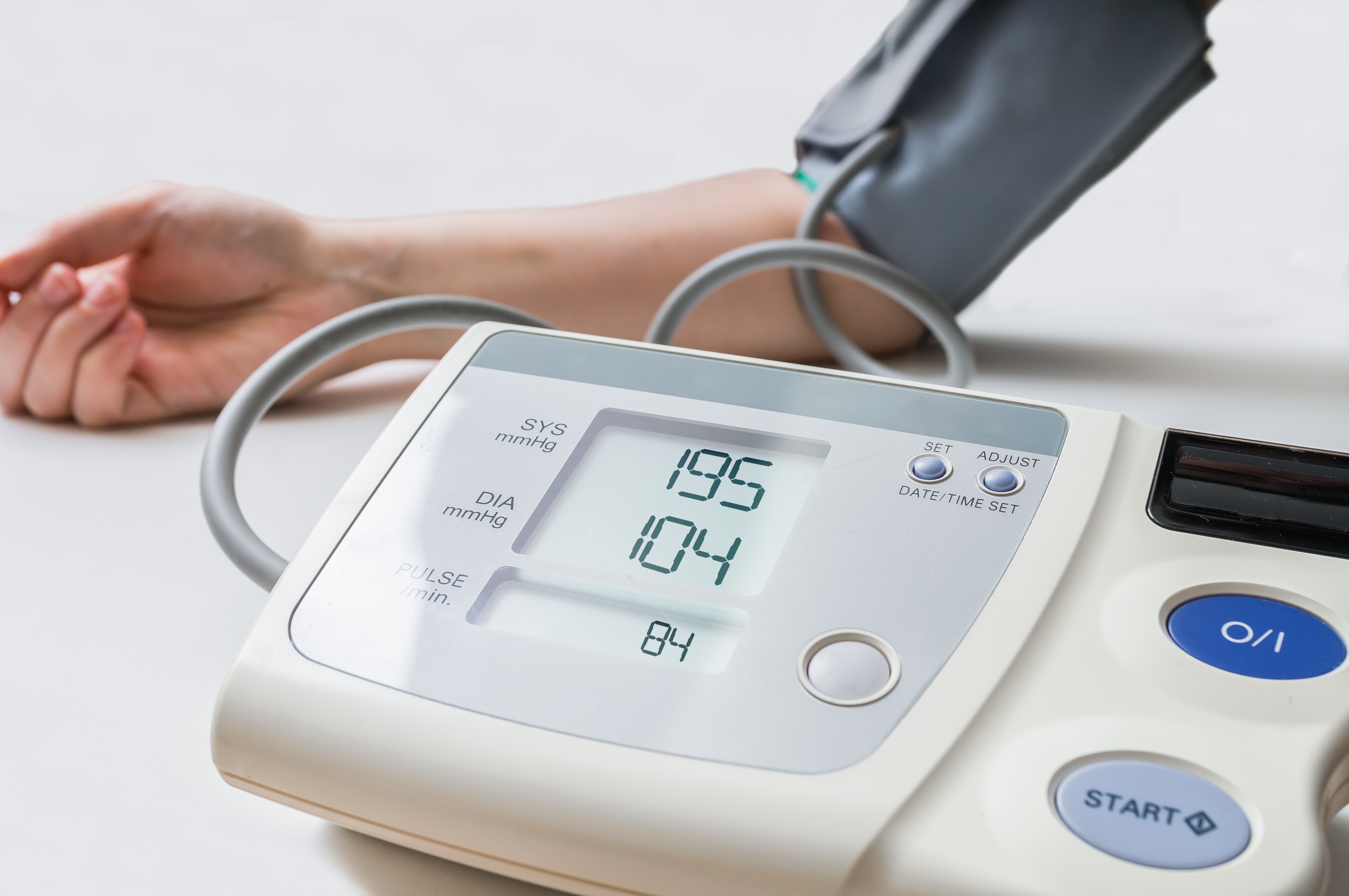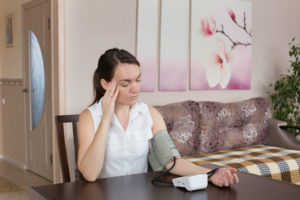
Factors that impact the accuracy of blood pressure readings
The only way to know if you have high blood pressure (BP) is to have your blood pressure checked. Even if you have your own blood pressure monitor and your BP readings are high, your healthcare provider will be the one to confirm that you are hypertensive. They make this diagnosis based on your BP measurement on more than one visit.
However, if you end up in the Emergency Room with an extremely high blood pressure, you most likely will be told that you had high blood that you were not aware of.
Unfortunately, some individuals find about their high blood pressure during an emergency situation such as a stroke.
Uncontrolled high BP problems can lead to serious health complications such as heart attack, kidney disease, stroke, or even death and disability. If you’ve experienced (or been diagnosed with) BP spikes or drops, it should be beneficial to have your BP regularly monitored. Lifestyle changes are also essential to manage blood pressure disorders.
What do the figures in a blood pressure reading mean?
Your BP is typically shown as two numbers displayed one over the other. The one on top is your systolic blood pressure or SBP, which is the measurement of the pressure in the blood vessels (the arteries) when the heart muscle contracts.
The bottom figure is the diastolic blood pressure which is a measure of the pressure in the blood vessels (arteries) when the heart muscle relaxes, refilling with blood.
When considered separately, a higher SBP and DBP are linked with an increased risk for heart-related medical problems.
If your BP result shows 120 for systolic BP and 80 for diastolic BP, it would be read as “120 over 80” or written as “120/80 mm Hg.”
Evidence has shown that the precise measurement of BP is crucial to ascertain the risk or guide management for high blood pressure and related heart issues. In support of this obtaining the correct measurement, the American Heart Association (AHA) has formulated recommendations for accurate BP measurements.
If you are checking your own blood pressure, it is essential to know the common factors that cause your reading to be not so accurate. An inaccurate reading can lead to an inaccurate treatment.
- The location of measurement
The standard location for BP measurement is the upper arm. A healthcare provider or someone trained to take your reading at home can use a stethoscope and place it at the elbow crease. This is the location of a major blood vessel of the upper arm, called the brachial artery.
In general, the systolic BP (blood pressure when the heart beats) increases when a reading is taken from blood vessels that are farther from the center of the body. Examples are BP readings taken using the wrist or fingers.
On the other hand, diastolic BP generally decreases when taken from the wrist or finger, in comparison with an upper arm reading.
Accurate measurements at the wrist require that the wrist be kept at the level of the heart – this avoids the effects of hydrostatic pressure (pressure of fluids inside the body).
Finger monitors may have lost their popularity due to inconsistent and inaccurate BP readings.
Regardless of where you take your blood pressure, make notes and also share the location of the cuff during measurement with your healthcare provider.
- Body position
A BP reading taken while sitting, lying, and standing will yield different results.
Generally, taking a BP measurement while an individual is in a sitting position is preferred.
Regardless of whether the BP reading is taken in a sitting or lying position, the blood pressure cuff should be at the level of the patient’s heart
When the BP is taken while lying down (with the face upward), the arm should be supported with a pillow. If not, the BP reading may show higher results than when a reading is taken in an upright position.
The back should be supported during BP taking. If the person is made to sit in an examination table with no back support, the SBP may be increased by 5-15, and the DBP elevated by roughly 6 mm Hg according to studies.
It is not advised to be in a cross-legged position as well. Crossing the legs during BP determination elevates the SBP by approximately 5-8 mm Hg and the DBP by 3-5mm Hg.
- Arm position
Changes in the position of the arms while taking a reading can significantly cause differences in results. For instance, when the upper arm is hanging down while in a sitting position (i.e., the upper arm is below the heart level) when measuring BP, the readings will be falsely high.
Consequently, if the arm is placed above the heart level, the reading will be too low.
In general, research evidence shows that a 2 mm Hg difference is seen with every inch deviation that the arm is placed below or above the heart level.
- Cuff size
Another typical error during BP taking is “miscuffing.” This happens when the size of the cuff (the inflatable part of a BP equipment that’s typically made of rubber) is too large or small relative to an individual’s arm circumference.
According to the Hypertension Clinical Practice Guidelines, using a BP cuff that is too large results in a falsely low BP. On the other hand, using a cuff that’s too small results in a falsely high BP reading.
The ideal cuff should have a length that is 80%, and a width that is at least 40% of the arm circumference of the user or patient. Hence, the length-to-width ratio should be at 2:1.
According to the AHA, the recommended cuff size when taking BP measurements are as follows:
- Small adult cuff size (12×22 cm)- for individuals with an arm circumference of 22-26 cm
- Adult cuff size (16×30 cm)- for individuals with an arm circumference of 27-34 cm
- Large adult cuff size (16×36 cm)- for individuals with an arm circumference of 35-44 cm
- Adult thigh cuff size (16×42 cm)- for individuals with an arm circumference of 45-52 cm
- Patient/user and related factors
Recent food consumption- after taking a meal, your body directs extra blood to the stomach and small intestines. Blood vessels distant from your digestive tract can narrow, making your heart beat faster and harder. This can result in postprandial hypotension(low blood pressure after meals). It is best to take a BP reading in the morning before eating. If you must eat first, wait for about 30 minutes before taking a measurement.
Exercise or movement during BP measurement– take your blood pressure before an activity, or you might get a high result. Also, refrain from moving about during BP measurement to obtain accurate results.
Temperature– if you are cold, you might get a falsely higher reading than expected. Low temperatures cause the blood vessels to narrow, which elevates BP because more pressure is needed to force blood through narrowed blood vessels.
Full bladder– A full bladder will give you a high reading. Empty your bladder before taking a measurement.
Tobacco, alcohol, and caffeine– It is best not to consume these before taking a reading. But if you have taken these, wait for at least 30 minutes before having your BP taken.
Clothing– Don’t put the cuff over clothing. Place it over bare skin. It will significantly affect your BP if roll-up your sleeve to the point that it gets tight on your upper arm. Take your arm out of the sleeve if possible, making sure it does not get tight; or take off your shirt.
Stress- Avoid stressful thoughts, and be in a comfortable position for at least 5 minutes before taking a measurement. Stress can alter your blood pressure.
- Device-related factors
Use of a non-calibrated device- if your equipment has not been correctly calibrated, it may not give you accurate results. Ensure a certificate is attached to your device, or have it calibrated with your physician.
Use of a non-validated device- similarly, if the accuracy of the equipment has not been validated, you may become over or under-diagnosed with a condition.
- Procedure-related factors
The user or patient talks during the procedure- 25-40% of individuals who initiated speech or talked during the measurement of BP lead to elevated readings according to several studies.
The use of inaccurate measurement techniques such as miscuffing
Best Practice For Accurate BP Measurement
- The patient or individual should be relaxed, sitting on a chair with the feet kept flat on the floor and the back supported. He or she should be seated for 3-5 minutes without talking or moving about before measuring BP.
- The individual should avoid smoking, exercise, or caffeine intake for at least 30 minutes before taking a BP reading.
- Voiding or emptying the bladder should be done before BP taking.
- Neither the patient nor the one taking the measurement should talk during the rest period, and especially while measuring the BP.
- Clothing that is covering the upper arm where the cuff is placed should be removed.
- It is recommended to use an upper arm BP device that has been validated and also calibrated periodically.
- The patient or user’s arm should be supported (e.g., resting on a table). The individual should not be holding his/her arm since isometric exercises (the contraction of a muscle without visible movement) can affect BP results.
- You need to position the middle of the cuff (typically marked on the BP cuff by the manufacturer) over the artery that pulsates on the patient’s bare upper arm. During measurement, the cuff should be at the level of the heart (the midpoint of the sternum).
- The correct cuff size should be used, such that it encircles 75 to 100% of the upper arm. Moreover, the cuff should be pulled taut, with proper tightness for both the top and bottom edges of the cuff, encircling the individual’s upper arm.
10.Take your BP in both arms, and record the arm that gives the higher result for subsequent BP readings.
- If you need to repeat measurements, give at least 1-2 minute intervals in between measurements.
- For BP readings using a stethoscope, the cuff should be inflated 20-30 mm Hg above the SBP, which has been estimated through the palpation method.
- The trained person taking your BP should deflate the cuff (release its pressure) slowly at about 2 mm Hg/secondwhile listening to the tapping–called the Korotkoff sounds.
- Commonly, the SBP and DBP are recorded at the nearest even number.
- If you take medications to manage your BP, note the time that the most recent medication was taken before the measurement.
- For home-use devices, upper arm cuff models, which work via oscillometric means, and have passed clinical validations are preferred.
- Also, it is advised for home users to use a device that automatically stores all readings, or can send readings electronically to the healthcare provider.
Final Note
Regular monitoring of your BP can assist the doctor in determining issues and risks for other health problems. Coupled with lifestyle changes, the right diet, exercise, and regular consultation, you will be able to achieve optimal health and wellness and avoid medical conditions that are the result of high blood pressure.
References
Muntner et al. (2019). Measurement of Blood Pressure in Humans: A Scientific Statement from theAmerican Heart Association. Retrieved fromhttps://www.ahajournals.org/doi/full/10.1161/HYP.0000000000000087
Pickering et al. (2005). Recommendations for blood pressure measurement in humans and experimental animals: part 1: blood pressure measurement in humans: a statement for professionals from the Subcommittee of Professional and Public Education of the American Heart Association Council on High Blood Pressure Research. Retrieved from https://www.ncbi.nlm.nih.gov/pubmed/15699287







